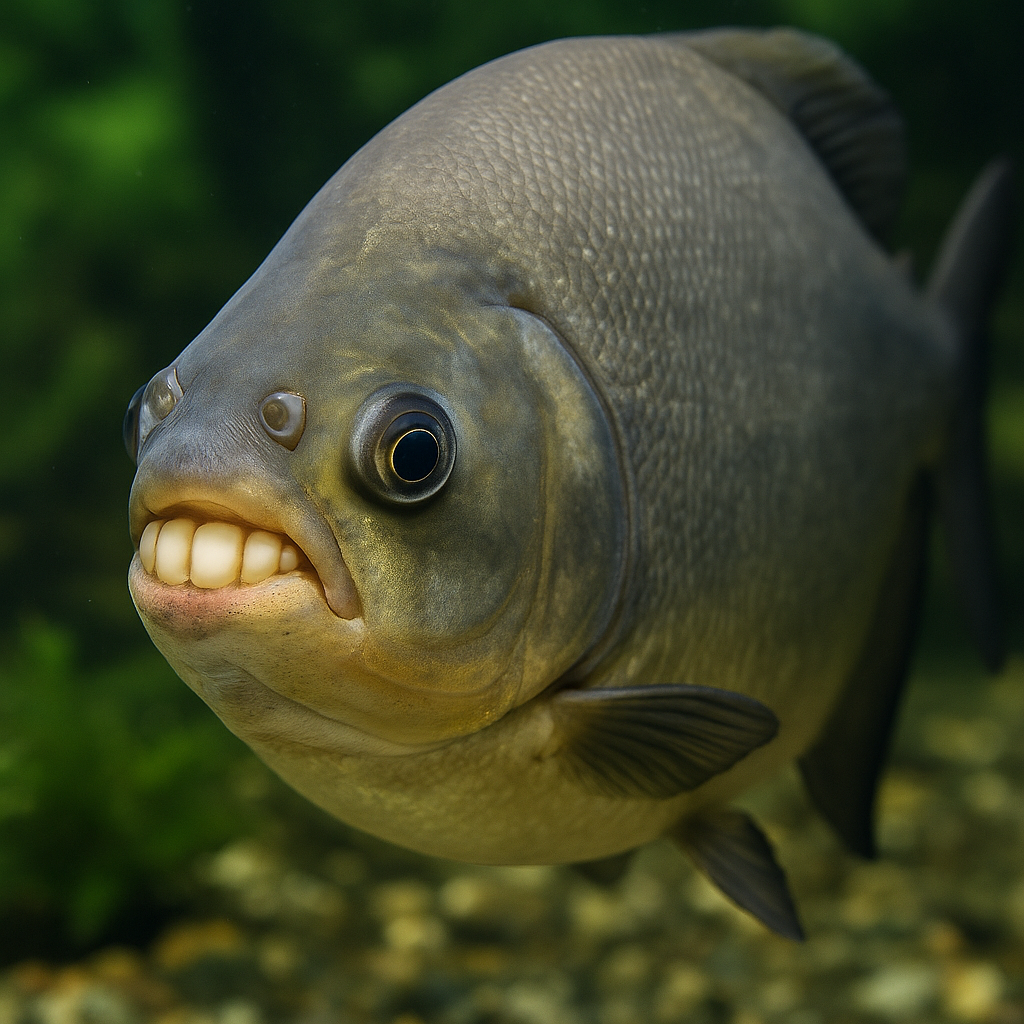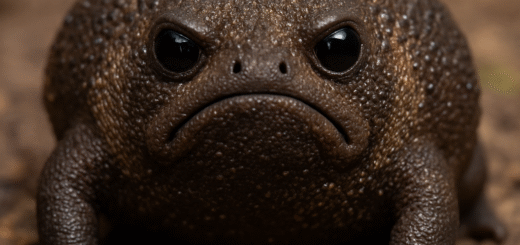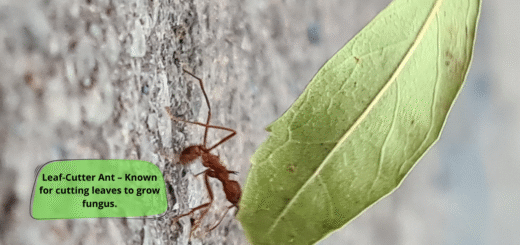The Pacu Fish: The Human-Toothed Mystery of the Amazon River
The Pacu fish, often referred to as the “Piranha’s cousin,” is a fascinating species native to the waters of the Amazon and Orinoco river basins in South America. With its unique appearance and curious dietary habits, the Pacu has gained attention both in scientific circles and popular media, particularly due to its striking resemblance to human teeth. But there’s much more to this freshwater fish than its famous grin.

Understanding the Pacu Fish
The Pacu (family Serrasalmidae) belongs to the same family as the piranha, but it’s less aggressive and has a completely different diet. While piranhas are known for their carnivorous habits, the Pacu is primarily herbivorous, feeding on a variety of fruits, nuts, seeds, and plant material. This dietary difference has played a crucial role in the Pacu’s survival in the wild.
Physical Features: The Human-Like Teeth
One of the most distinctive features of the Pacu fish is its teeth, which closely resemble human molars. This unique characteristic is what makes the Pacu stand out in the animal kingdom. These teeth are not just for show — they are perfectly adapted for crushing the hard seeds and nuts that make up a significant portion of its diet. The Pacu’s powerful jaws allow it to easily crack open the tough outer shells of fruits like Brazil nuts and other seeds found in the dense Amazon rainforest.
Despite their resemblance to human teeth, these fish are not dangerous to humans. The Pacu’s teeth are specialized for grinding and crushing, not for tearing flesh. However, there have been occasional reports of injuries from these fish when they bite, often due to the force of their bite and their tendency to bite when provoked.
Habitat and Distribution
Pacu fish are primarily found in the freshwater rivers and lakes of the Amazon and Orinoco basins in South America. These vast river systems provide a perfect environment for the Pacu, offering a wide range of food sources and ample space for swimming and breeding. They thrive in warm waters with temperatures ranging from 72 to 82°F (22 to 28°C). Due to their habitat, Pacu fish are well adapted to life in slow-moving rivers, streams, and flooded forests.
In addition to the Amazon River, Pacu fish have been introduced to various parts of the world, including Southeast Asia and even parts of North America, often for aquaculture or ornamental purposes in aquariums. However, in non-native regions, they can sometimes become invasive species, disrupting local ecosystems.
Pacu Fish Diet and Behavior
Pacu fish are omnivores, but their diet is mainly plant-based. In the wild, they consume fruits, seeds, and nuts that fall into the water from overhanging trees. Their teeth are ideal for crushing the tough outer shells of these foods, allowing them to access the nutrient-rich interior.
Interestingly, Pacus have also been observed eating smaller aquatic creatures like insects and small fish on occasion. This behavior is relatively uncommon compared to their usual herbivorous diet, but it shows the fish’s adaptability in times of food scarcity.
Unlike their cousins, the piranhas, which tend to hunt in groups and are famous for their sharp, jagged teeth and ferocity, Pacu fish are more peaceful. They do not pose any significant danger to humans or other animals in their habitat.
The Pacu Fish in Aquariums
Due to their unusual appearance and peaceful nature, Pacu fish are often kept in home aquariums. However, keeping a Pacu in captivity requires specific care. Pacu fish grow significantly larger than many aquarium enthusiasts expect — reaching up to 3 feet (1 meter) in length — which can make them difficult to house in smaller tanks. They need plenty of swimming space and require a diet that mimics their natural plant-based diet.
In addition to their size, Pacu fish are also quite active and social, so it’s important to provide them with a proper environment that replicates the conditions of their natural habitat. A large tank with strong filtration and a variety of plant material is ideal.
The Pacu Fish’s Cultural Significance
In many South American cultures, the Pacu fish is highly prized both for its meat and its role in the local ecosystem. Fishermen in the Amazon River and surrounding regions use traditional methods to catch Pacu, and the fish is a common feature in local cuisine. Its mild, white flesh is often grilled, fried, or served in stews.
Moreover, the Pacu is sometimes seen as a symbol of strength and resilience, able to adapt to a variety of diets and environments. Its survival in some of the most biodiverse and challenging ecosystems on Earth speaks to its evolutionary success.
Conclusion: The Pacu Fish, A Marvel of Nature
The Pacu fish is one of the most unique and intriguing creatures of the Amazon River. With its human-like teeth and herbivorous diet, it stands out as an example of nature’s ingenuity. Whether swimming gracefully in the waters of South America or being kept in an aquarium halfway across the world, the Pacu continues to fascinate and surprise people. It’s not just its appearance that makes the Pacu interesting, but its behavior, diet, and adaptation to diverse environments, making it an essential part of the world’s freshwater ecosystems.








